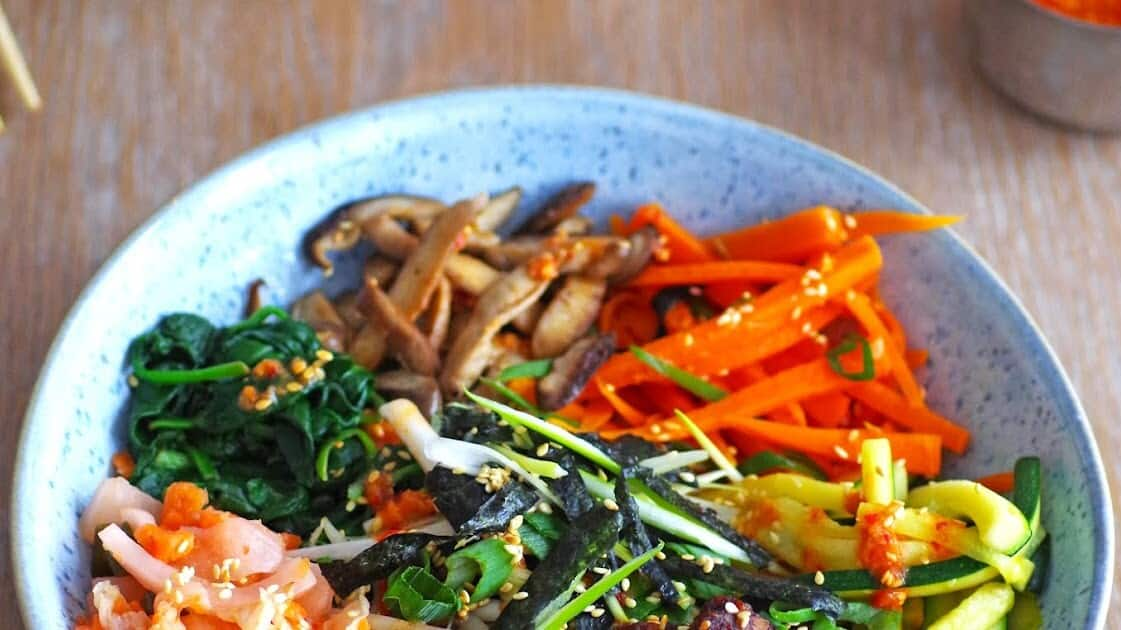
Recipe: Cook Korean bibimbap with tempeh
What's the story
Bibimbap, a traditional Korean dish, is known for its vibrant colors and diverse flavors. It consists of rice, various vegetables, a protein source, and gochujang (Korean chili paste). This version uses tempeh instead of meat, offering a vegetarian and eggless option. Originating from Korea and enjoyed for centuries, bibimbap celebrates the inclusion of seasonal vegetables. Let's get cooking.
Ingredients list
Gather the following ingredients
For this recipe, you will need one cup of short-grain rice, 200 grams of tempeh, one medium carrot, one zucchini, one cup of spinach leaves, 100 grams of shiitake mushrooms, two tablespoons soy sauce (divided), two tablespoons sesame oil (divided), salt to taste, gochujang (Korean chili paste) to taste, and sesame seeds for garnish.
Step 1
Preparing the rice
Begin by washing one cup of short-grain rice under cold water until clear. Place the rinsed rice and two cups of water in a pot, bringing it to a boil. Once boiling, lower the heat, cover, and simmer for about 18 minutes or until water is absorbed. Then, remove from heat and keep covered for 10 more minutes to allow steaming.
Step 2
Cooking tempeh and vegetables
While the rice cooks, heat a tablespoon of sesame oil in a pan over medium. Cook the tempeh slices until golden on each side, about five minutes per side, then set aside. Using the same pan, possibly adding more sesame oil, saute carrots, zucchini, spinach and shiitake mushrooms with a pinch of salt each. Cook until tender yet vibrant.
Step 3
Seasoning tempeh
In a small bowl, mix one tablespoon of soy sauce with one tablespoon of sesame oil to create a marinade. Brush this mixture over both sides of the warm, cooked tempeh slices. Doing so while they're still warm ensures they fully absorb the flavors. This step is essential for seasoning the tempeh, giving it a savory taste that enhances the dish's overall flavor profile.
Step 4
Assembling bibimbap
To assemble bibimbap, divide the cooked rice among bowls as a base. Arrange the cooked vegetables in sections over the rice and place the seasoned tempeh slices in the center or alongside, depending on your preference. Add gochujang to taste and sprinkle sesame seeds on top as a garnish before serving. This vegetarian bibimbap combines textures and nutrition, making it perfect for any day.